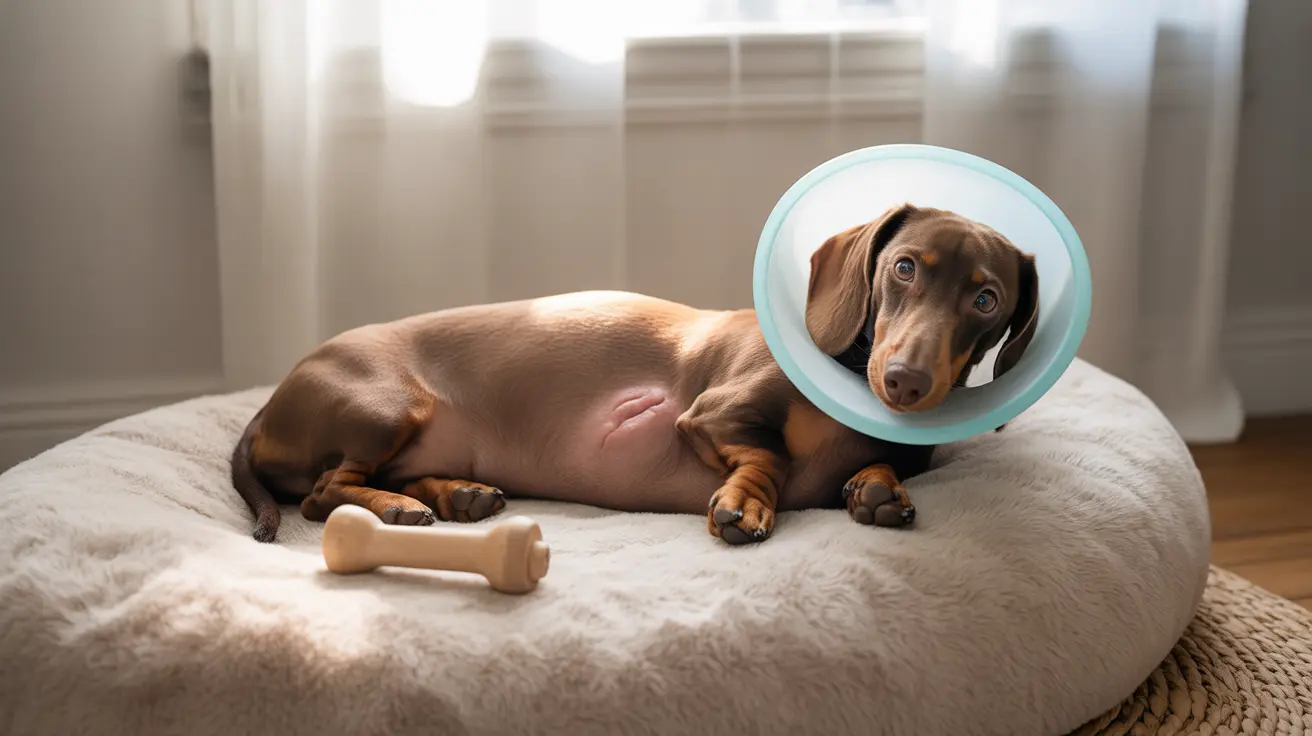Understanding Normal Spay Incisions in Dogs
When your female dog undergoes spay surgery, knowing what to expect regarding the incision size can help ease your concerns. A normal spay incision typically ranges from 2-4 inches (5-10 cm) in length, though this can vary significantly based on your dog's size, age, and the surgical technique used.
Modern veterinary medicine offers both traditional and minimally invasive options for spay surgery, each with different incision sizes and recovery implications. Understanding these differences can help you make informed decisions about your pet's procedure.
Traditional vs. Laparoscopic Spay Incisions
Traditional Spay Surgery
In a traditional spay procedure, veterinarians make a single incision in the abdomen, typically measuring:
- 2-4 inches for small to medium dogs
- 4-6 inches for larger breeds
- Up to 6 inches for deep-chested or overweight dogs
This larger incision allows the surgeon full access to remove both the ovaries and uterus (ovariohysterectomy) in one procedure.
Laparoscopic Spay Surgery
Laparoscopic or "keyhole" surgery requires just 1-2 small incisions, each measuring approximately:
- 1-1.5 centimeters in length
- About the size of a keyhole
- Significantly smaller than traditional incisions
Incision Location and Placement
The placement of a spay incision is crucial for successful surgery and recovery. Typically, veterinarians make the incision:
- Just below the umbilicus (belly button) in adult dogs
- Midway between the umbilicus and pubis in puppies
- Along the midline of the abdomen
Recovery and Healing Time
The size of the incision directly impacts recovery time:
- Traditional spay incisions typically heal in 10-14 days
- Laparoscopic incisions may heal in as little as 3-5 days
- Complete internal healing takes approximately 4-6 weeks
Post-Surgery Care for Spay Incisions
Proper care of the spay incision is essential for optimal healing:
- Keep the incision site clean and dry
- Monitor for signs of infection or complications
- Use an E-collar to prevent licking or scratching
- Restrict activity during the healing period
- Follow all post-operative instructions from your veterinarian
Frequently Asked Questions
How long is a normal spay incision for a dog, and what affects its size?
A normal spay incision typically ranges from 2-4 inches, though it can be longer for larger dogs. Factors affecting size include the dog's breed, age, weight, and whether traditional or laparoscopic surgery is performed.
Where is the typical location of a spay incision on a female dog's abdomen?
The spay incision is typically located along the midline of the abdomen, just below the umbilicus (belly button) in adult dogs, or midway between the umbilicus and pubis in puppies.
What is the difference in incision size and recovery between traditional and laparoscopic spay surgeries in dogs?
Traditional spay surgery requires a 2-6 inch incision with 10-14 days recovery time. Laparoscopic surgery uses 1-2 small incisions (1-1.5 cm each) with a shorter 3-5 day recovery period.
How should I care for my dog's spay incision to prevent infection during recovery?
Keep the incision clean and dry, prevent licking or scratching with an E-collar, monitor for signs of infection (redness, swelling, discharge), and restrict activity during healing.
When is the best age to spay my dog to minimize incision size and promote healing?
Most veterinarians recommend spaying at 6 months of age for small to medium breeds. Large breeds may benefit from waiting until after 12 months. The optimal age depends on breed, size, and individual health factors.






